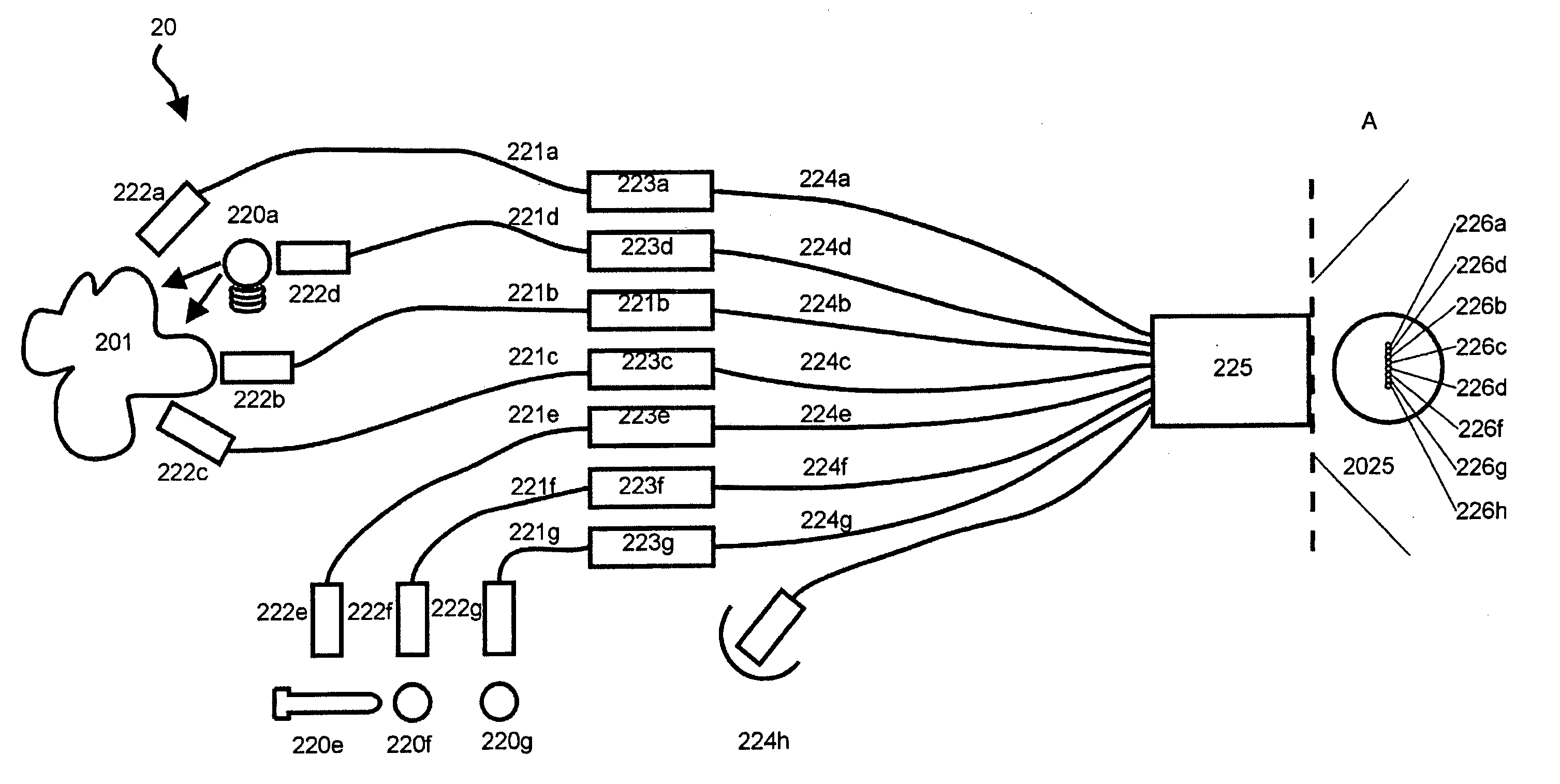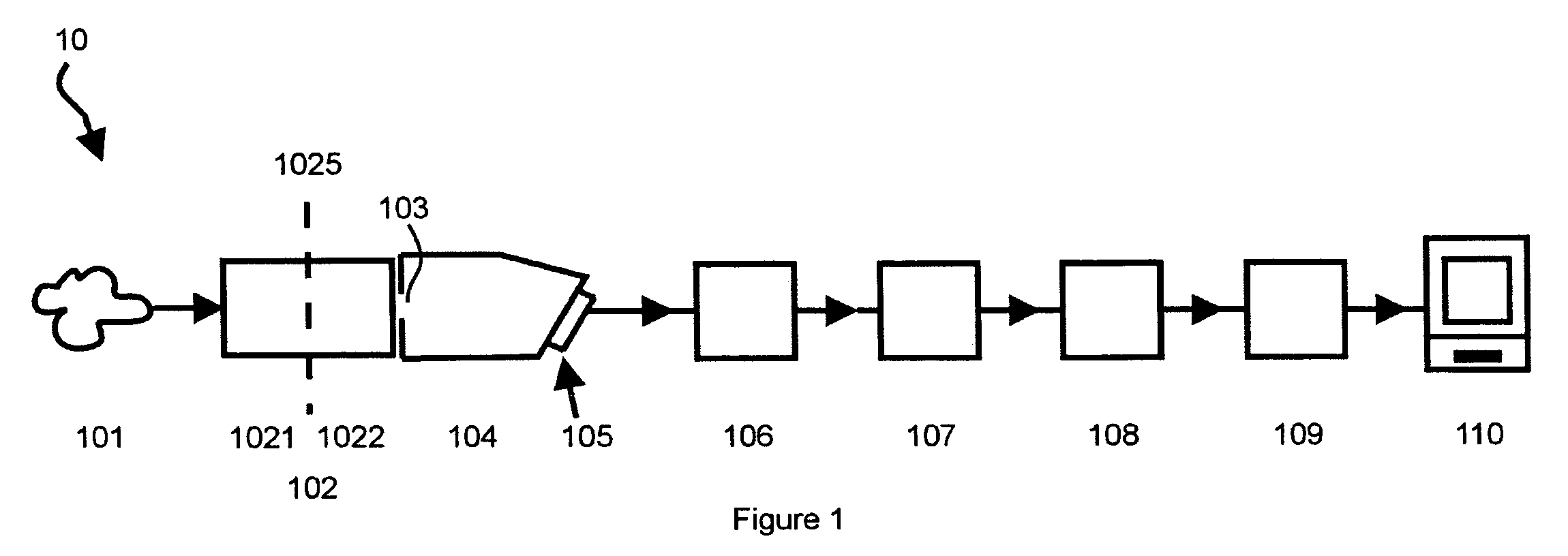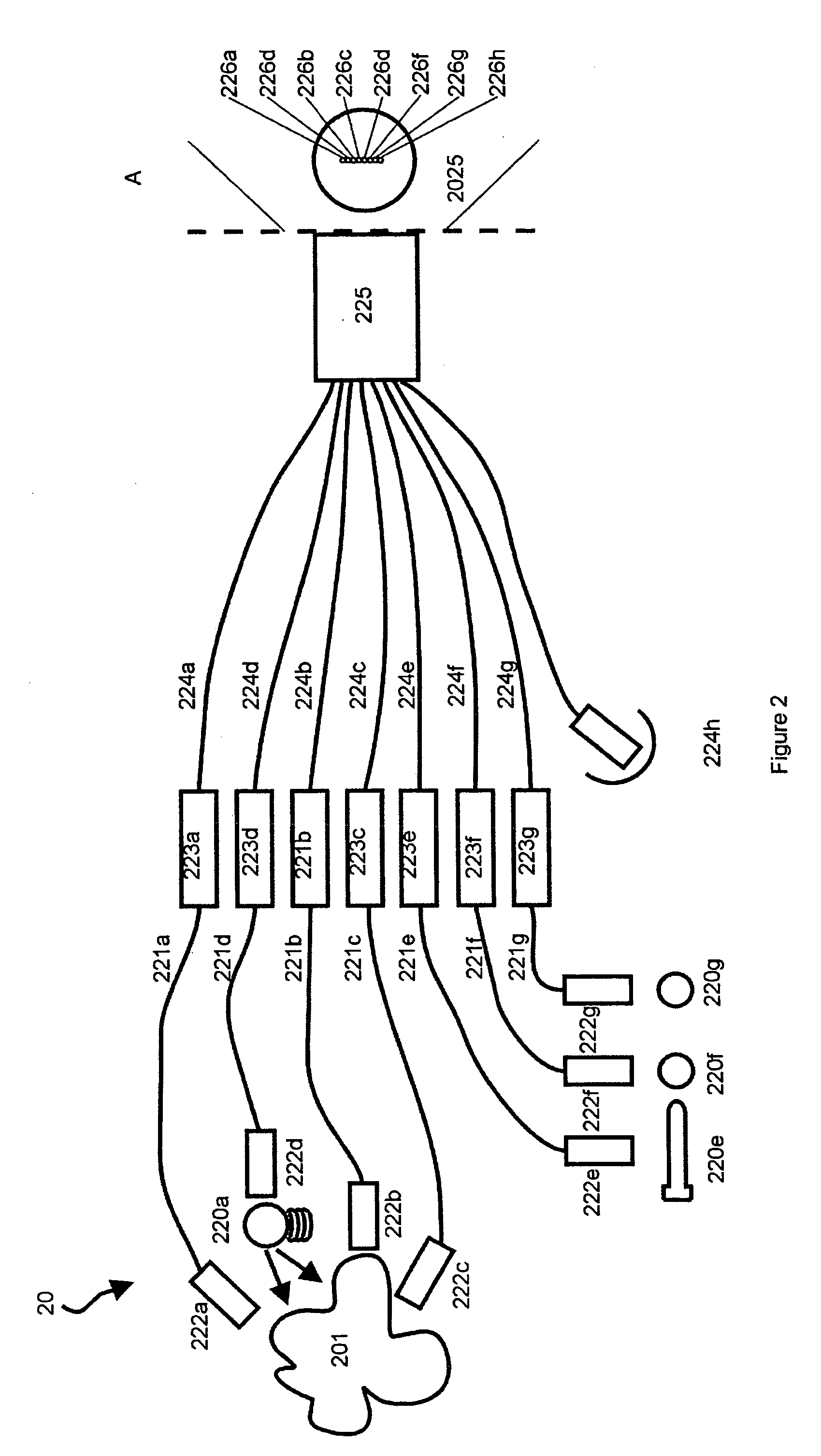Multi-channel spectrum analyzer
a spectrum analyzer and multi-channel technology, applied in the field of spectrum analyzers, can solve the problems of complex construction, inability to complete spatial linearization of spectrum, and inability to address the situation of different wavelengths
- Summary
- Abstract
- Description
- Claims
- Application Information
AI Technical Summary
Benefits of technology
Problems solved by technology
Method used
Image
Examples
Embodiment Construction
[0048]The terms “spectrum analyzer” and “spectrometer” are used interchangeably in the description and in the claims.
[0049]In one aspect, the present invention provides a high performance, multi-channel (also referred to herein as a line imaging spectrum analyzer) for simultaneous registration of spectra of radiation delivered to any point arranged along a piece of straight line, referred to herein as a slit-like entry port (or slit) of the spectrum disperser. It is well known that the majority of existing spectrophotometers with gratings or prisms are not built to resolve spectral differences of radiation delivered to different points of the slit, and that they generally provide information only about spectral properties of the total radiation delivered. Such instruments are easier to build and are satisfactory for many applications. There exist applications, however, when comparison of spectral composition of radiation produced at different points of the direct or indirect source ...
PUM
 Login to View More
Login to View More Abstract
Description
Claims
Application Information
 Login to View More
Login to View More - R&D
- Intellectual Property
- Life Sciences
- Materials
- Tech Scout
- Unparalleled Data Quality
- Higher Quality Content
- 60% Fewer Hallucinations
Browse by: Latest US Patents, China's latest patents, Technical Efficacy Thesaurus, Application Domain, Technology Topic, Popular Technical Reports.
© 2025 PatSnap. All rights reserved.Legal|Privacy policy|Modern Slavery Act Transparency Statement|Sitemap|About US| Contact US: help@patsnap.com



